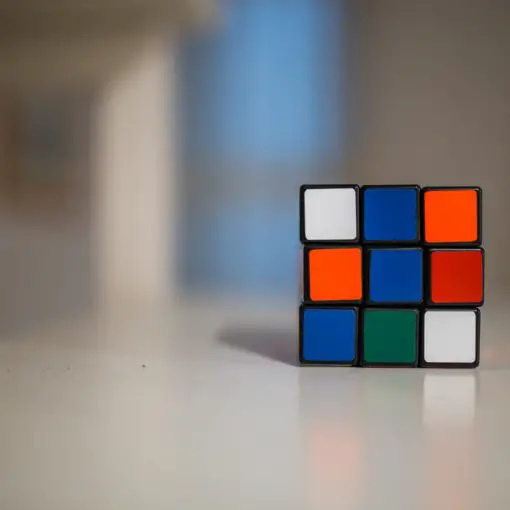If you are seeking to improve your critical thinking abilities, you need to learn how to recognize, reduce, and redirect cognitive biases. Learn more about the most common cognitive biases, strategies for combatting cognitive bias, and the benefits of beating cognitive bias.
What is a cognitive bias?
A cognitive bias is an unconscious error in judgment you make due to a built-in inclination or prejudice. Cognitive biases exist because our brains need to take shortcuts to process the vast amounts of information needed to make decisions. Most of the time, those shortcuts are helpful.
Occasionally, our brains create shortcuts that lead to irrational thinking. Cognitive biases are the irrational ways we search for, interpret, evaluate, and use the information to make decisions. Some people believe that humans will always experience cognitive biases because our ability to think rationally is bounded by the capabilities of our brains.
What is the difference between a logical fallacy and a cognitive bias?
A logical fallacy is an error in a line of reasoning, whereas a cognitive bias is an error in thought. An argument made with logical fallacies has faults in either the premises of the argument or the conclusions drawn from those premises. An argument made from a cognitive bias may be totally logically sound, but reflect some distortions in thinking.
For example, someone might argue “I burn everything I cook, therefore I am a bad cook.” There is no problem with the logic of the argument, so it is not a logical fallacy. However, it’s likely that the person is subconsciously over-emphasizing how frequently they burn food. If the person doesn’t actually burn their food every time, this is an example of a cognitive bias.
What are the signs of cognitive bias?
The easiest way to think of a cognitive bias is “a simplification that leads to exaggeration.” All cognitive biases are forms of distortion of the truth. To recognize cognitive biases, look for hyperbole and oversimplification.
Which cognitive biases are the most common?
Confirmation Bias
Confirmation bias is when you are more attuned to information that confirms what you already believe to be true. You may write off or ignore information that conflicts with your existing belief.
Hindsight Bias
Hindsight bias is when you overestimate your ability to predict events. You remember the events you predicted accurately and forget about the predictions you made that didn’t come true.
Anchoring Bias
Anchoring bias is when you rely too heavily on the earliest information you learned about a topic as a reference point. Marketers are aware of the anchoring bias, which is why some stores seem to be perpetually on sale. We are more likely to buy something if our original perception of its value is high.
Optimism Bias/ Pessimism Bias
Optimism bias and pessimism bias are two sides of the same coin. In these biases, you are predisposed to assume good outcomes are more likely (optimism bias) or that things will go wrong (pessimism bias).
Overconfidence from the optimism bias leads to reckless choices that may put you at risk. Conversely, being overly pessimistic can cause you to shy away from great opportunities because you assume that you will fail.
Bandwagon Effect
The bandwagon effect is when you are more likely to do or believe something because others are doing the same thing. “If all your friends jumped off a cliff, would you?” is a challenge to the bandwagon effect. This bias is also known as “herd mentality.”
Halo Effect
The halo effect is the assumption that if a person has positive attributes in one area, they will have positive attributes in other, unrelated areas. A common example of the halo effect is the assumption that better-looking people are more likely to be intelligent or talented.
The reverse halo effect is the assumption that one negative trait applies more universally. The halo effect can apply to our perceptions of brands or social groups, not just individuals.
Framing Effect
The framing effect refers to the way that perception can be altered by the way information is presented or framed. For example, you would be more likely to purchase a weight loss supplement that advertised “75% of users lost weight in 6 months” than one that advertised “25% of users did not lose weight in 7 months” even though these percentages add up to the same total.
Availability Heuristic
The availability heuristic is the tendency to judge how likely an event is based on how easily you can recall other examples of that event. For example, people tend to overestimate the frequency of shark attack deaths because shark attacks are common in both pop culture and news articles.
How can I reduce cognitive biases?
First, practice noticing thoughts that are distorted. Your emotions can clue you into times when your anxiety, stress, or frustration may heighten irrational thinking. Try using the Socratic method on your own thoughts. Ask yourself “how did I come to that conclusion?”
Once you start digging into a thought that seems irrational, your knowledge of common cognitive biases can help you detect which biases are present in that thought. It might be helpful to write down which cognitive biases you notice frequently in your thoughts. Don’t be afraid to challenge yourself.
Re-visiting a decision or thought process can help you reduce cognitive bias. By removing yourself from the emotions of the initial thought process, you may be able to spot bias in your previous thinking. This is why “before you make a big decision, sleep on it” is actually good advice!
How will reducing cognitive biases improve my critical thinking?
Being able to recognize and reduce your own cognitive biases will allow you to make better decisions. You will recognize your own strengths and limitations more accurately. You will begin to notice which situations spike your irrational judgments, and which situations allow your rational
When you become familiar with cognitive bias, you will be able to evaluate the premises of your arguments for bias, not just logical fallacies. This could make you a more convincing person. It might open you up to opportunities you had ruled out because of previous biases.
References
https://www.verywellmind.com/cognitive-biases-distort-thinking-2794763
https://www.simplypsychology.org/cognitive-bias.html





